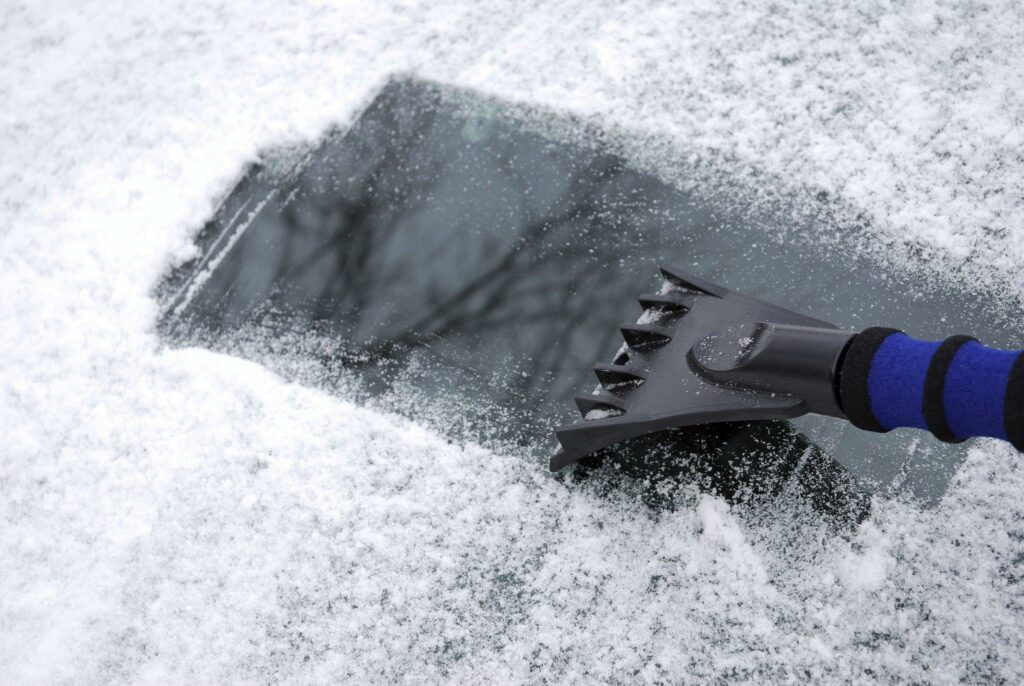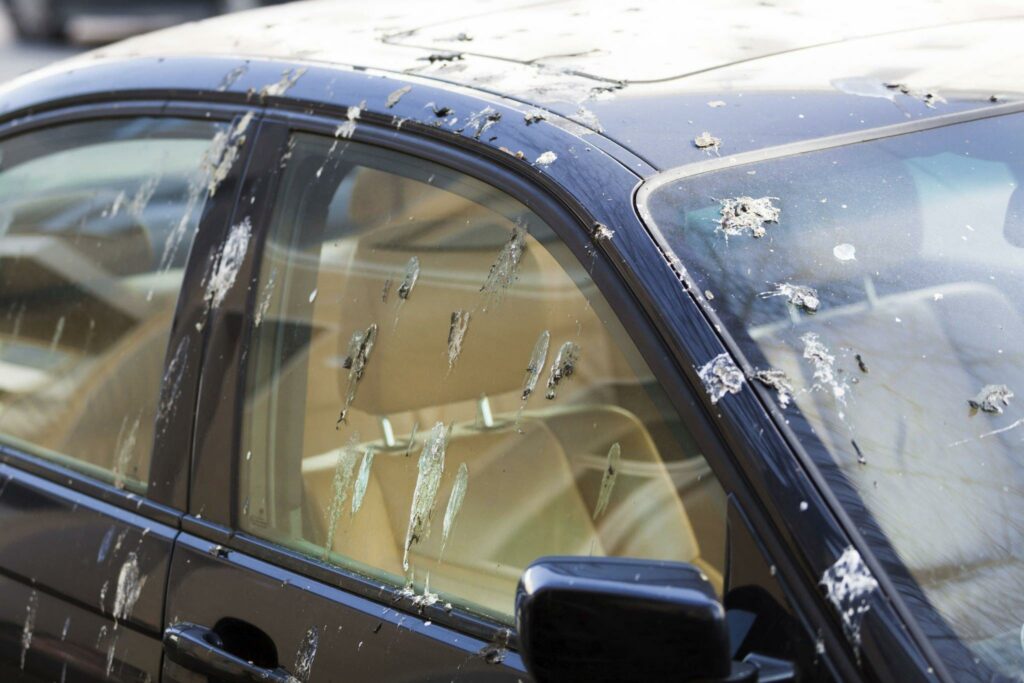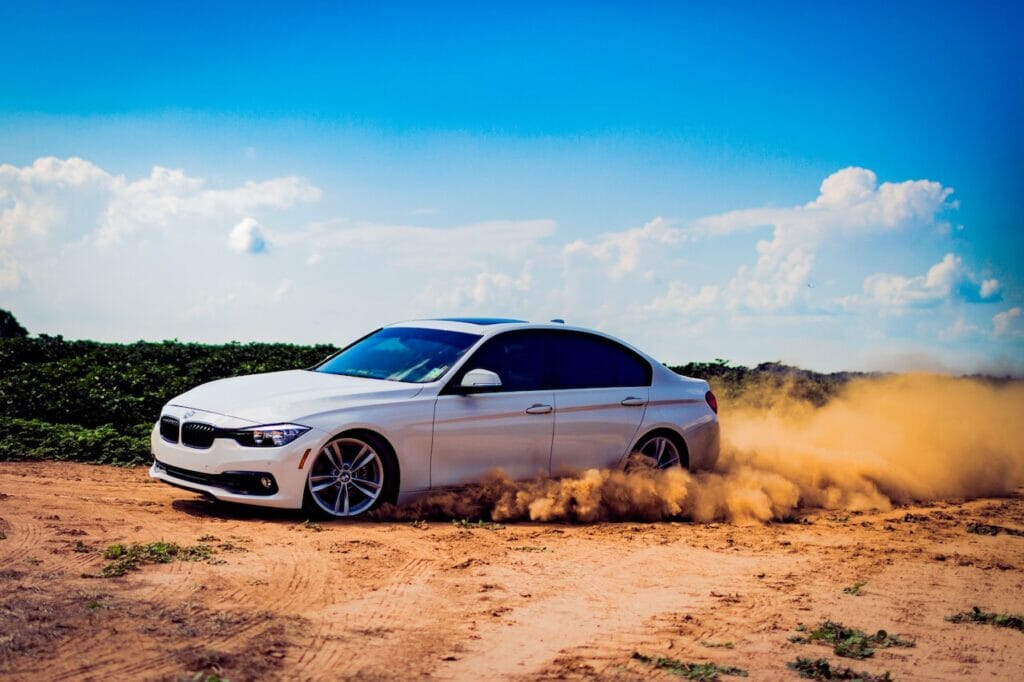Our cars are an extension of our personalities. They reflect our style, taste, and how we express ourselves. When it comes to protecting the vehicles we love, there is a lot to be said for keeping them out of sight as much as possible—and that means keeping them protected while parked outside.
But what can you do? How can you prevent damage from happening to your vehicle? In this blog post, we’ll explore some of the most common hazards of parking outside and simple ways to avoid them like the plague.
★★★★★
High Rated Reviews from 150+ Customers
After a simple spray and wipe down using a microfiber towel, your car’s paint job will be protected for up to an entire year. Your car’s top coat impenetrable to any chemical, liquid, or environmental contaminant there is. In a matter of minutes!
Top Hazards for Outdoor-Parked Cars and Trucks
Let’s face it: parking your car outside is risky business. You’re vulnerable to all sorts of things, including scratches, dings, theft, vandalism, and let’s not forget the weather conditions that aren’t always kind to your car. Our vehicles also have to endure the elements of the changing seasons, which can cause rust and dents. Here are some other hazards cars parked outside face:
Snow and Ice

If you’re in a cold climate, the weather can be a hazard to your car. If the snow starts to pile up on top of your car and ice forms on the windshield, it could mean that your vehicle will not start later. With this hazard, you always want to ensure that you have a scraper handy to remove snow before it gets too heavy and melts into water.
Rain

Don’t be fooled that all rain is is a “free car wash”. It’s potential dangers are multi faceted. Rain can cause scratches and rust to the exterior of your vehicle.
Rust: When water comes in contact with metal that is not painted, that is when rust and corrosion can happen.
While you might think “hey, my car is covered in paint. There’s no problem” think again. While on older cars, clear coat peeling over time can happen. First the clear coat layer starts to peel, then the paint starts to chip off. And eventually you’re down to bare metal. All it takes is a little exposure to metal for rust to start taking hold. You’ll start to notice bubbles under your car’s paint as the rust begins to spread.
Consider the potential of exposed bare metal not only on the main exterior of your ride but in the areas you don’t pay too much mind to. Like under the hood. That’s a common spot for paint chips to happen and car owner’s tend not to repair them because “out of sight out of mind”. Be proactive and try to touch up paint spots before they become a bigger problem.
Hard water: Water hardness varies depending on where you live. Hard water is water that has a lot of minerals in it, specifically calcium and magnesium. If your city has hard water, when you get rain on your car, it’ll evaporate eventually but the problem is far from solved. The water is gone but the minerals still remain. Even worse, due to the heat, these minerals bake on to your car. Now you have to do what’s called water spot removal. Which isn’t all that hard when you use a product like Torque Detail Water Spot Remover.
Bird Poop

When your car is parked outside, it’s exposed to all kinds of things that can affect its appearance—and bird droppings are among the worst offenders. If you’re not careful, their corrosive excrement can eat away the metal on your vehicle, causing rust and discoloration.
Your Best Defense
Most People DON’T Do This & Pay the Consequences
Most people have heard of car wax but only really think of it as a tool to make your car shiner. Modern car wax alternatives not only give you show winning shine but also a level of protection from mother nature.
I’m going to tell you all about the 3 most popular coatings right now for shining and protecting your ride and I’ll even summarize their pros and cons for you.
The most basic type of coating is wax. Wax is applied in thin layers over the paint job to protect it from getting scratched or damaged. It helps keep off dirt and grime as well as UV rays from damaging the paint job over time.
Ever see an ugly hoopty driving around town with paint that looks so faded it looks like the owner poured bleach all over it? My money is on them not regularly protecting their paint.
Car wax is an effective way to GUARANTEE this doesn’t happen to your car. What you have to do is wax up your ride every other weekend. Far more time consuming than the other coatings I’m going to tell you about but hey, this is what you HAD to do to your car back in the old days.
This is why it worked. Most old school wax is carnauba based. This wax is harvested from the carnauba palm. This tree NEEDS the wax to protect its leaves from the harsh tropical sun. That’s where the protection benefits of carnauba wax comes from. It’ll protect your paint from the sun.
Although wax is excellent for protecting against minor scratches, it isn’t very durable, can’t withstand much abuse, and will fade away on its own in a couple of weeks.
Which leads us to our next option…
Ceramic coatings are a more advanced way to protect your car’s paint job. They’re made of ceramic particles that attach to the top layer of your car’s exterior, creating a hard shell that keeps out dirt and water.
This adds UV protection, STRENGTH to protect your paint from many types of scratches, and a fantastic shine.
They’re great, tried and trued, and there’s a ton of ceramic coating products out there.
But…
Graphene coating has become the new standard in car protection because it offers durability and longevity with minimal maintenance requirements. Graphene’s unique molecular structure allows it to bond with your car’s paint so that it becomes part of the structure itself, giving you an impenetrable layer of protection that can last years without needing reapplication or touch-ups.
The graphene molecule itself is 100x stronger than steel. How crazy is that?
If you wish to keep your ride clean and rust-free, you can use Torque Detail Graphene Burst. It is a unique, non-toxic coating that’s been proven to provide up to one year of protection. Just imagine that extra piece of mind knowing that mother nature isn’t going to depreciate the value of your ride on a daily basis because YOU took the time to protect it.
Plus, it is easy to apply. Simply spray on the product and then wipe off any excess with a microfiber cloth. The coating will dry within 15 minutes, and you can use your car again after about an hour.
This is a must have for all vehicle owners, even if you’ve never washed a car before. It’s just so easy to use.
★★★★★
High Rated Reviews from 150+ Customers
After a simple spray and wipe down using a microfiber towel, your car’s paint job will be protected for up to an entire year. Your car’s top coat impenetrable to any chemical, liquid, or environmental contaminant there is. In a matter of minutes!
Final Thoughts
Not all of us have our dream garage yet. If you’re a car owner who parks their vehicle outside, then you’re probably familiar with the dread that comes with watching your fade and scratches add up faster than the dealership upsells when you bought your car.
But it doesn’t need to be that way. You can protect your car’s paint job and keep it looking like new by a Graphene Burst Coating completely on your own without having to shell out much money…this weekend. The coating will repel dirt, water, and other elements that can damage the surface of your vehicle while also protecting against UV rays that cause oxidation and fading over time.









